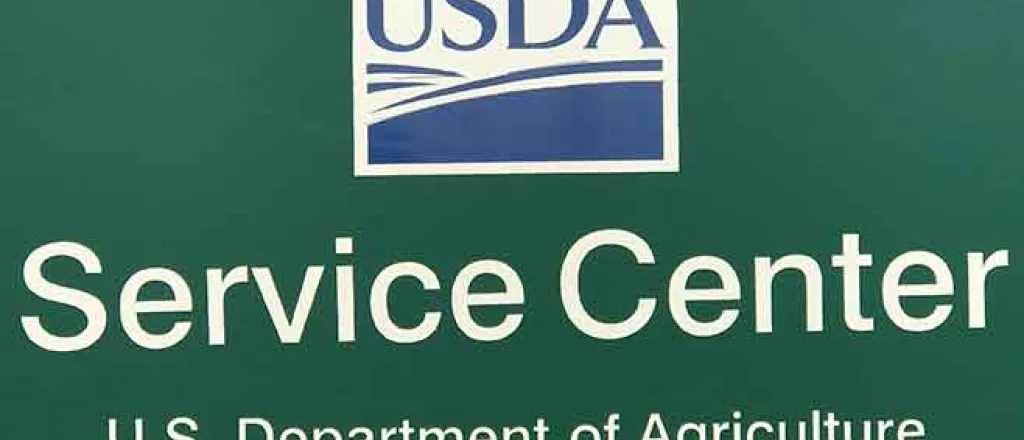
USDA Update – August 3, 2021
IMPORTANT DATES TO REMEMBER:
- CRP signup dates – CRP Grasslands – July 12 – August 20
- PLIP Signup deadline September 17, 2021.
- Non-Emergency CRP Haying and Grazing available for eligible acreage subject to payment reduction.
Disclaimer: Information in this UPDATE is pertinent to Kiowa County FSA only. Producers reading this and that do not have FSA interest in Kiowa County are advised to contact their local FSA Office.
THE USDA SERVICE CENTER HAS A DROP BOX AVAILABLE ON THE EAST SIDE OF THE BUILDING.
OBTAINING FSA/NRCS INFORMATION
This information is located at the end of the UPDATE every week; but just want to remind producers the internet has a wealth of information regarding USDA FSA and NRCS information. We encourage producers to add Farmers.gov to favorite websites and to sign up for GovDelivery newsletters.
Visit website www.Farmers.gov for up to date information on current USDA FSA/NRCS programs.
Subscribe to GovDelivery emails: Visit www.fsa.usda.gov/subscribe to receive GovDelivery emails.
2020 PRICE LOSS PAYMENT RATES
The 2020 PLC rates for wheat, barley and oats have been finalized and the payments will be issued after October 1, 2021 to eligible producers on eligible farms who elected PLC during the 2020 election and enrollment period. Final payment rate for the balance of the commodities will not occur until September 1, 2021.
Final payment rate per bushel for wheat – barley and oats are as follows:
- Wheat – 45 cents
- Barley – 20 cents
- Oats - zero
Below is the computation for payment by farm.
85% of farm specific crop base acres x farm yield x payment rate x sequestration rate x payment share.
Example -
Farm # 15 has 100-acre wheat base and 25-bushel wheat PLC yield and contract shares are 66.67% to operator and 33.33 to owner and sequestration rate is 5.9 %.
100 x 85% = 85 x 25 x .45 x = 956.25 x 94.1% = 899.83 farm payment x .6667 = 599.92 operators payment rounded to $600.
FSA FARM LOAN INTEREST RATES and LOANS
Operating, Ownership and Emergency Loans
FSA offers farm ownership and operating loans with favorable interest rates and terms to help eligible agricultural producers, whether multi-generational, long-time or new to the industry, obtain financing needed to start, expand or maintain a family agricultural operation. FSA also offers emergency loans to help producers recover from production and physical losses due to drought, flooding, other natural disasters or quarantine. For many loan options, FSA sets aside funding for historically underserved producers, including beginning, women, American Indian or Alaskan Native, Asian, Black or African American, Native Hawaiian or Pacific Islander, and Hispanic farmers and ranchers.
Interest rates for Operating and Ownership loans for August 2021 are as follows:
- Farm Operating Loans (Direct): 1.750%
- Farm Ownership Loans (Direct): 3.250%
- Farm Ownership Loans (Direct, Joint Financing): 2.500%
- Farm Ownership Loans (Down Payment): 1.500%
- Emergency Loan (Amount of Actual Loss): 2.750%
FSA also offers guaranteed loans through commercial lenders at rates set by those lenders.
Commodity and Storage Facility Loans
Additionally, FSA provides low-interest financing to producers to build or upgrade on-farm storage facilities and purchase handling equipment and loans that provide interim financing to help producers meet cash flow needs without having to sell their commodities when market prices are low. Funds for these loans are provided through the Commodity Credit Corporation (CCC) and are administered by FSA.
- Commodity Loans (less than one year disbursed): 1.125%
- Farm Storage Facility Loans:
- Three-year loan terms: 0.500%
- Five-year loan terms: 0.875%
- Seven-year loan terms: 1.125%
- Ten-year loan terms: 1.375%
- Twelve-year loan terms: 1.500%
- Sugar Storage Facility Loans (15 years): 1.750%
Disaster Support
FSA also reminds rural communities, farmers and ranchers, families and small businesses affected by natural disasters, such as drought, wildfires and hurricanes, that USDA has programs that provide assistance. USDA staff in the regional, state and county offices are prepared with a variety of program flexibilities and other assistance to residents, agricultural producers and impacted communities. Many programs are available without an official disaster designation, including several risk management and disaster assistance options.
Pandemic Support
Through September 1, 2021, FSA’s Disaster Set-Aside provision is available to direct loan borrowers who have been impacted by the pandemic. This enables an upcoming annual installment to be set aside for the year and added to the final installment. For annual operating loans, the loan maturity date may be extended up to twelve months in order to set aside the installment. This provision is normally used in the wake of natural disasters, and a second Disaster Set-Aside may be available for direct loan borrowers who already have a DSA in place on a loan due to another designated natural disaster.
USDA Announces Dates for Conservation Reserve Program Grasslands Signups
Agricultural producers and landowners in Colorado can apply for the Conservation Reserve Program (CRP) Grasslands signup until August 20, 2021. This year, the U.S. Department of Agriculture (USDA) updated signup options to provide greater incentives for producers and increased the program’s conservation and climate benefits, including setting a minimum rental rate and identifying two national priority zones.
The CRP Grassland signup is competitive, and USDA’s Farm Service Agency (FSA) will provide for annual rental payments for land devoted to conservation purposes.
Grasslands Signup
CRP Grasslands helps Colorado landowners and operators protect grassland, including rangeland, including native grass, while maintaining the areas as working grazing lands. Protecting grasslands contributes positively to the economy of many regions, provides biodiversity of plant and animal populations, and provides important carbon sequestration benefits.
FSA has updated the Grasslands Signup to establish a minimum rental rate of $15 per acre, which will benefit 1,300 counties.
To focus on important wildlife corridors, FSA also identified National Grassland Priority Zones, providing extra incentives to producers for enrolling grasslands in important migratory corridors and environmentally sensitive areas – the Greater Yellowstone Elk Migration Corridor and the Severe Wind Erosion – Dust Bowl Zone. Counties within these two zones get extra ranking points as well as $5 added to their rental rate. The CRP Grasslands Ranking Factors fact sheet has additional information.
How to Sign Up
To enroll in the CRP Grasslands signup, producers and landowners should contact USDA by the August 20 deadline. Service Center staff continue to work with agricultural producers via phone, email, and other digital tools. Because of the pandemic, some USDA Service Centers are open to limited visitors. Contact your Service Center to set up an in-person or phone appointment. Additionally, more information related to USDA’s response and relief for producers can be found atfarmers.gov/coronavirus.
This office is expecting many producers will be interested in CRP Grasslands. Interested producers need to be reminded of the following –
Rental rate for Kiowa County is $20.00 per acre as the county is in the National Grassland Priority zone.
CRP payment limitation is $50,000 per person; the limitation encompasses ALL CRP payments; including Grasslands. Producers who are maxed out at the $50,000 and if they enroll into the CRP Grasslands and are accepted; could potentially be limited.
If the offer is accepted; NRCS will do a site visit to determine species of grasses and forbs and will determine a grazing plan based on that information. These grazing plans will have drought management included.
Eligible producer requirements according to Handbook 2-CRP, paragraph 126 must be followed regarding submitting an offer. If the producer offering the land for enrollment has not owned or operated the land 12 month prior to August 20, 2021; that producer is not considered an eligible producer. Current operators must show they have control of the land for the duration of the contract to be eligible to submit an offer.
CRP Grassland contract shares will be recorded on the FSA-578 acreage report. If the acreage is leased to another producer on a year to year or AUM basis; the acreage will remain certified as CRP Grasslands on the FSA-578, report of acreage with the CRP participants for ALL FSA program eligibility.
- Ex. Producer Joe offers native grass into CRP Grasslands. USDA accepts the offer and producer Joe signs the conservation plan and the CRP-1. The shares on the CRP-1, reflect producer Joe with 100% of the CRP Grasslands contract; those shares are reflected on the annual report of acreage on FSA-578. Producer Joe then leases the native grass to graze that is under the CRP Grasslands contract to Producer Fred on a year to year basis. Producer Fred is paying Producer Joe a grazing lease payment at the end of the calendar year. The county triggers for LFP or Livestock Forage Program due to drought conditions the county is experiencing. The FSA farm records will NOT be changed to reflect Producer Fred as having risk and control of the acreage he leases from Producer Joe; because Producer Joe has a CRP Grasslands contract and for FSA purposes, risk and control of the acreage is certified to Producer Joe.
CRP Non-Emergency Haying and Grazing
Haying and grazing of CRP acres is authorized under certain conditions to improve the quality and performance of the CRP cover or to provide emergency relief to livestock producers due to certain natural disasters. There are two types of haying and grazing authorization: non-emergency and emergency.
In general, non-emergency haying may be utilized every three years and non-emergency grazing may be utilized every two years. Additional grazing may be available to new and beginning farmers.
CRP participants requesting emergency or non-emergency haying and grazing must file a request with their county FSA office indicating the acres to be hayed or grazed before the activity begins.
Before CRP acres are declared eligible for haying or grazing, a modified conservation plan developed by NRCS or a technical service provider must be obtained. The modified conservation plan must be site specific, include the authorized duration and reflect local wildlife needs and concerns. The primary purpose must be to maintain vegetative cover, minimize soil erosion and protect water quality and wildlife habitat quality. These plans must ensure no long-term damage to the conservation cover is caused.
For more information on CRP haying and grazing visit fsa.usda.gov/crp or contact your FSA county office.
















